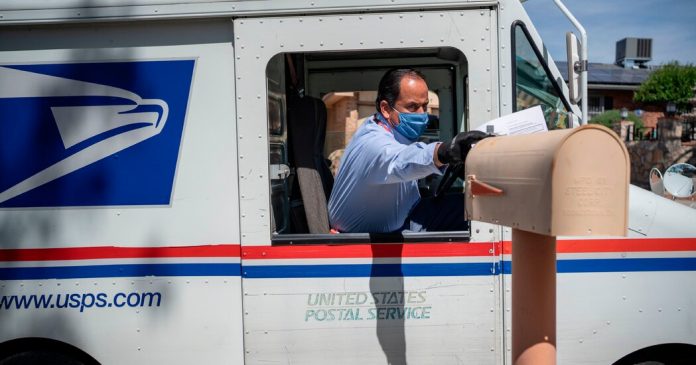In the suburban Virginia district of Representative Gerald E. Connolly, a Democrat who leads the House subcommittee that oversees the Postal Service, 1,300 people voted by mail in a 2019 primary — last month, more than 34,000 did.
“We are worried about new management at the Postal Service that is carrying out Trump’s avowed opposition to voting by mail,” Mr. Connolly said. “I don’t think that’s speculation. I think we are witnessing that in front of our own eyes.”
Erratic service could delay the delivery of blank ballots to people who request them. And in 34 states, completed ballots that are not received by Election Day — this year it is Nov. 3 — are invalidated, raising the prospect that some voters could be disenfranchised if the mail system buckles.
In other states, ballots can be tallied as long as they are postmarked by Election Day, but voting rights groups say ballots are often erroneously delivered without a postmark, which prevents them from being counted.
The ability of the Postal Service “to timely deliver and return absentee ballots and their work to postmark those ballots will literally determine whether or not voters are disenfranchised during the pandemic,” said Kristen Clarke, the president of the National Lawyers’ Committee for Civil Rights Under Law.
In New York, where officials urged people not to cast ballots in person during June’s primary, counting of mail-in ballots is still underway weeks later, leaving some crucial races undecided. In some cases, ballots received without postmarks are being discarded.
Making the problem worse, New York law requires that election officials wait to begin counting mail-in ballots until the polls close on Election Day. Other states allow counting to begin earlier, though most insist that no results be revealed until after voting ends. In Arizona, officials can begin tallying votes 14 days early. In Florida, officials can begin verifying signatures on ballots 22 days before the election.
